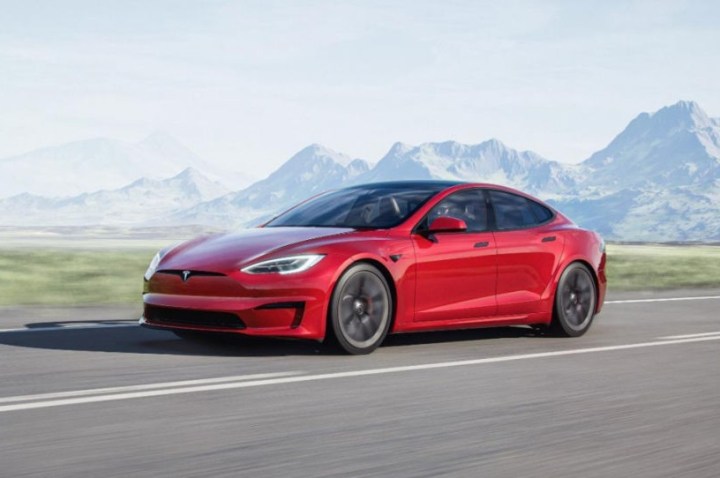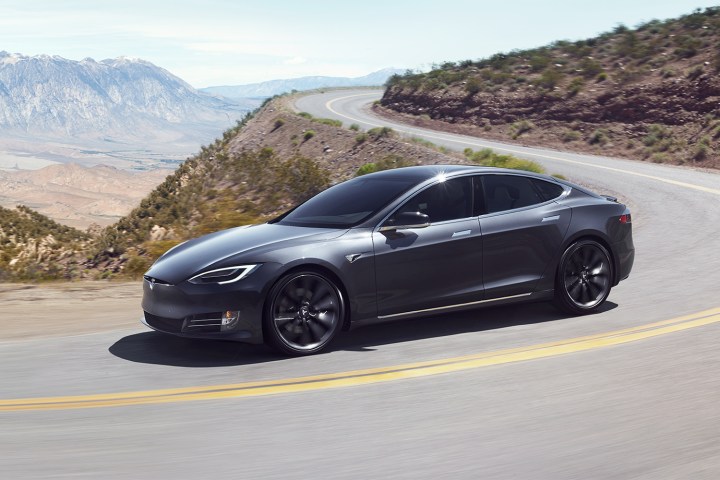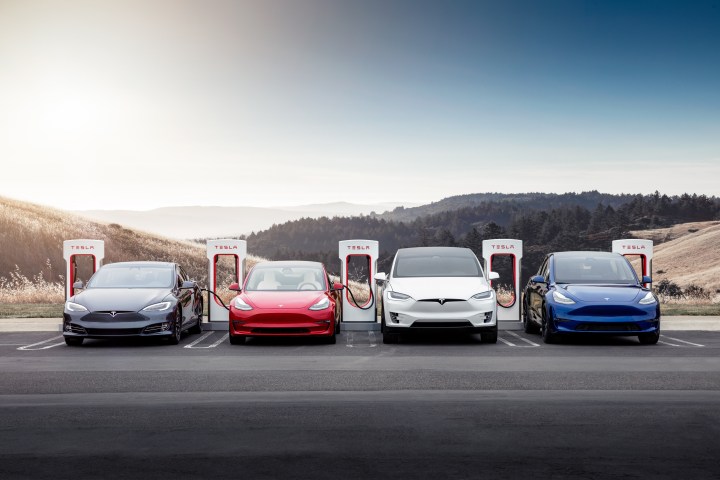
The Tesla Model S was the original cool electric car, boasting a sleek and stylish design and the ability to go superfast. But there’s another premium Tesla in the lineup that’s also pretty darn quick — and it offers a whole lot more space to boot. The Tesla Model X offers the same design aesthetic as other Tesla cars, along with a superpowerful electric motor and some other features that you can’t find on any other Tesla.
But that doesn’t mean it’s better than the Model S. In fact, it’s not — it’s just different. But which is the better option for your needs? Here’s a look at the two cars and what makes them different — or the same.
Design
Perhaps the most notable difference between the two cars is their design. The Model S is a smaller sedan, while the Model X is marketed as an SUV (though it’s perhaps more of a crossover). Regardless of marketing, however, the Model X is basically much larger than the Model S.
They still have similarities, though. Both cars offer a similar overall approach to design, meaning that they both exemplify Tesla’s minimalistic design language, which is found across all of its currently available cars. They both have relatively slim headlights on both the front and the back, with a glass top that allows drivers to easily see out the top of the car. They both look quite nice, despite the fact that their design is aging a little.

But the Model X does have some different design touches too it. For example, the rear doors on the Model X are so-called “gull-wing doors” — which means that they open upward, instead of out. This makes the opening much larger, and means that there’s more room to enter and exit the car — and to adjust things like baby seats. Also, it juat looks cool.
Despite the cool features, the Model X doesn’t necessarily offer a radically different design than the Model S. This one’s a tie.
Winner: Tie
Interior and tech
The design of the interior of the cars is quite similar too — apart from the obvious differences, like the extra room in the Model X. The minimalistic approach continues on the inside of the cars, with sleek lines across the dash and almost no physical controls for things like climate control and media playback. Both cars have the option of a traditional steering wheel or a steering yoke.

As you would expect from a Tesla, the car is very tech-heavy. As mentioned, most of the controls for the car are built into the infotainment system, including for things like A/C. Some find that the trade-off of having a sleeker dash is worth packing those controls into the software — while others prefer to be able to turn a knob to control infotainment. Through the infotainment system, you’ll also be able to access Tesla’s built-in maps and media controls, and even apps like Netflix (when you’re charging the car, of course). The cars do not offer Apple CarPlay or Android Auto — so you’ll have to stick to using Tesla’s own software.
Both cars offer access to Tesla’s autonomous tech — though you’ll have to pay for more than basic features like lane-centering and adaptive cruise control. The pricing for this is the same on both cars.
The two cars take a very similar approach to interior and tech, so it’s another tie here.
Winner: Tie
Performance
Electric cars in general benefit from immediate response time, and both the Model S and the Model X are some of the best-performing electric cars out there.

At the time of this writing, the Model X was available in two variants — a standard Model X and a Model X Plaid. The standard Model X is dual-motor with all-wheel drive, and it reaches 60 mph in an impressive 3.8 seconds. Step up to the tri-motor Model X Plaid, however, and you’ll reach speed in an incredible 2.5 seconds. That’s very quick.
Not as quick as the fastest Model S though. The Model S also comes in a standard model and a Model S Plaid, again with two or three motors respectively. The standard Model S gets from 0 to 60 mph in only 3.1 seconds — while the Model S Plaid gets there in 1.99 seconds. It’s literally the fastest production car available right now in that regard.
Winner: Tesla Model S
Range and charging
Tesla doesn’t offer the single-best range of an electric car — that title currently goes to the Lucid Air. But, its cars are generally near the top of the list of electric cars with the best ranges. The Model X offers a solid range of either 348 miles in the standard Model X or 333 in the Model X Plaid.

But again, the Model S steps that up a little. The Model S Plaid has a range of 396 miles, which is excellent — but in the base Model S, you’ll get an even better 405 miles. Again, that’s among the longest-lasting electric cars out there.
Both cars can charge at up to 250 kilowatts, which is quite fast — though not as fast as cars like the Kia EV6 or Hyundai Ioniq 5. You’ll be able to charge both the Model S and Model X in around 30 minutes or so, at a Supercharger that supports the 250kW charging speeds.
Winner: Tie
Pricing and availability
Both the Tesla Model S and Model X are available right now, so you can get one for yourself if you want to. But they do come at slightly different prices.

The Model S starts at $71,090 for the standard Model S, or a much more expensive $86,090 for the Model S Plaid. The base Model X is a little more expensive than the base Model S at $76,090 — however the Model X Plaid is the same price as the Model S Plaid, at $86,090. So, if you’re willing to shell out for the superfast Plaid, you’ll have to decide between extra room and a faster speed, but not a different price.
Still, because the base Model S is cheaper, it gets the win here.
Winner: Tesla Model S
Overall winner: Tesla Model S
The Tesla Model S is faster and cheaper than the Model X — but that doesn’t necessarily mean that you should definitely get it over the Model X. I recommend basing your decision on the size of car that you need, rather than things like the speed. After all, both cars are still very fast. If you want a little more room — like if you have a family — then it’s probably still worth going for the Model X over the Model S. But, if you don’t need as much space and could stand to save a little cash, the Tesla Model S may be the way to go.
Editors' Recommendations
- The Tesla Model Y is at its lowest price yet — but should you buy one?
- Tesla’s fix for faulty Cybertruck pedal is simpler than you might think
- Rivian R2 vs Tesla Model Y: Can the R2 challenge the Model Y’s dominance?
- Tesla Autopilot vs. full self-driving: What’s the difference?
- New Model 3 ‘takes out the baby fat,’ Tesla designer says in new video


